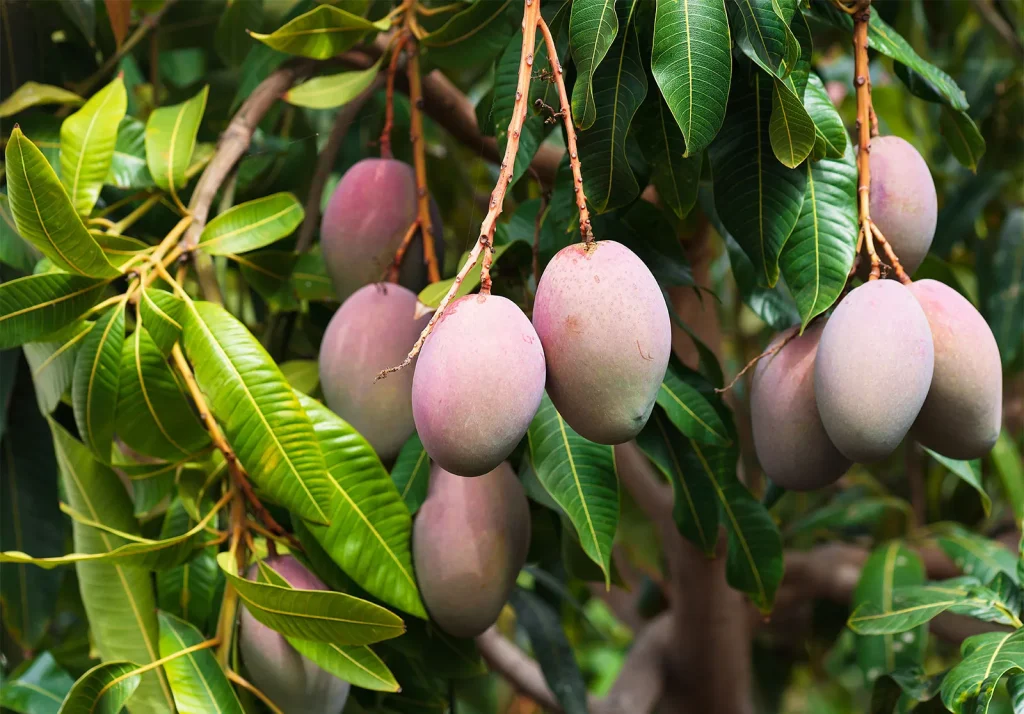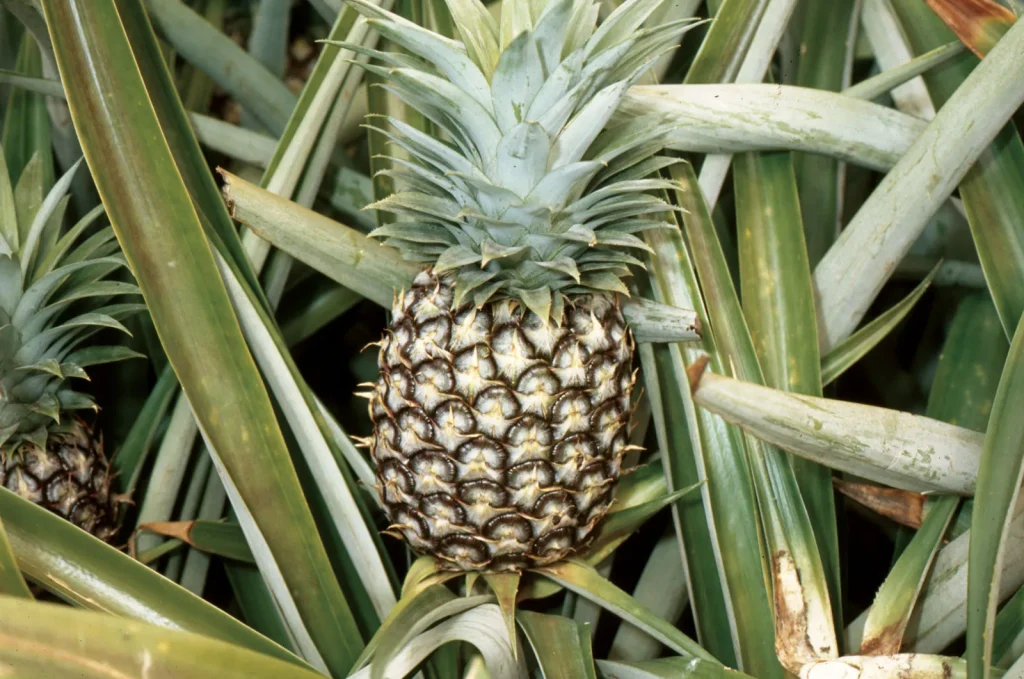The banana is one of the most popular and recognizable fruits in the world. With its bright yellow skin and sweet, creamy flesh, it has become a staple in the diets of millions of people. Despite its common appearance on grocery store shelves, the banana has a rich history and numerous health benefits that might surprise you. From ancient origins to its status as a modern-day superfood, the banana’s journey is a fascinating one. Let’s explore the history, health benefits, varieties, and versatile culinary uses of this incredible fruit.
The Origins of the Banana
The banana (Musa spp.) is believed to have originated in Southeast Asia, specifically in the region that encompasses modern-day Malaysia, Indonesia, and the Philippines. Historical records suggest that bananas have been cultivated for over 7,000 years. Early travelers and traders spread the banana plant throughout Asia, Africa, and the Pacific Islands. It wasn’t until the 15th and 16th centuries that bananas were introduced to the Western Hemisphere, brought to the Americas by Portuguese and Spanish explorers.
The modern banana that we are familiar with today is known as the Cavendish variety. However, this is not the original type of banana that was once popular. In the early 20th century, a different variety known as the Gros Michel was the most widely grown. Unfortunately, a fungal disease called Panama disease wiped out Gros Michel plantations, leading to its near extinction. The Cavendish, which was more resistant to the disease, became the replacement and is now the primary variety sold worldwide.
Banana Varieties: More Than Just the Cavendish
While the Cavendish banana is the most common, there are actually hundreds of banana varieties around the world, each with unique flavors, textures, and uses. Some notable varieties include:
1. Red Bananas
Red bananas have a reddish-purple skin and are smaller and sweeter than Cavendish bananas. Their flesh is creamy and slightly pink, with a hint of raspberry flavor.
2. Plantains
Plantains are larger and starchier than regular bananas and are typically used for cooking rather than eating raw. They are a staple in many African, Caribbean, and Latin American cuisines.
3. Burro Bananas
Burro bananas are short and chunky with a lemony flavor. They are slightly firmer than Cavendish bananas and are great for both raw and cooked preparations.
4. Manzano Bananas
Also known as apple bananas, these are smaller and have a firmer texture. They have a sweet, tangy taste reminiscent of apples and strawberries.
Nutritional Benefits of Bananas
Bananas are more than just a tasty snack; they are packed with essential nutrients that offer a wide range of health benefits. Here are some reasons why you should consider adding bananas to your diet:
1. Rich in Potassium
Bananas are famous for their high potassium content. Potassium is an essential mineral that helps regulate blood pressure, balance fluids, and support proper muscle and nerve function. One medium-sized banana contains around 400-450 mg of potassium, which is about 10% of the daily recommended intake.
2. Good Source of Dietary Fiber
A medium banana provides about 3 grams of fiber, which is beneficial for digestive health. The soluble fiber in bananas helps slow digestion, promoting a feeling of fullness and reducing hunger. It also helps regulate blood sugar levels, making bananas a great snack for people with diabetes when eaten in moderation.
3. Supports Heart Health
The combination of potassium, fiber, and antioxidants in bananas contributes to heart health. Potassium helps maintain healthy blood pressure levels, while the fiber helps reduce cholesterol. The antioxidants, such as dopamine and catechins, may help reduce the risk of heart disease.
4. Energy Booster
Bananas are an excellent source of quick energy, thanks to their natural sugars (glucose, fructose, and sucrose). They are a popular choice for athletes and fitness enthusiasts as a pre- or post-workout snack. The natural sugars provide an immediate energy boost, while the fiber ensures a steady release of energy.
5. Aids in Digestion
Bananas are gentle on the stomach and can help soothe digestive issues like acid reflux and indigestion. The fruit contains pectin, a type of soluble fiber that helps regulate the digestive system. Additionally, bananas are known for their ability to act as a natural antacid, providing relief from heartburn.
6. Rich in Essential Vitamins
Bananas are a good source of vitamins C and B6. Vitamin C is a powerful antioxidant that helps boost the immune system, while vitamin B6 is crucial for brain health and the production of neurotransmitters like serotonin and dopamine.
Culinary Uses: A Versatile Ingredient
Bananas are incredibly versatile and can be used in a variety of dishes, from sweet to savory. Here are some creative ways to enjoy bananas:
1. Smoothies and Shakes
Bananas are a popular ingredient in smoothies and shakes because of their creamy texture and natural sweetness. They blend well with other fruits like berries, mangoes, and spinach, making them a great base for healthy drinks. Adding a banana to your smoothie can provide a thick, creamy consistency without the need for additional sweeteners.
2. Baking
Bananas are a staple in many baking recipes. They can be used to make banana bread, muffins, pancakes, and cookies. Overripe bananas are especially great for baking as they add moisture and sweetness to the batter. For a healthier twist, you can use mashed bananas as a substitute for butter or oil in recipes.
3. Breakfast Toppings
Sliced bananas make an excellent topping for oatmeal, cereal, yogurt, and toast. The fruit adds natural sweetness and a boost of nutrients to your breakfast. Try pairing bananas with peanut butter on whole-grain toast for a quick and satisfying morning meal.
4. Frozen Treats
Frozen bananas are a delicious and healthy alternative to ice cream. Simply slice bananas and freeze them for a few hours, then blend the frozen pieces until smooth. You can add cocoa powder, peanut butter, or vanilla extract for extra flavor. The result is a creamy, dairy-free dessert that satisfies your sweet tooth.
5. Banana Chips
Banana chips are a popular snack made by slicing bananas and either frying or baking them. They are crispy and sweet, making them a great alternative to potato chips. You can make your own banana chips at home by baking thinly sliced bananas in the oven with a light coating of honey or cinnamon.
Bananas in Popular Culture
The banana has made its mark in popular culture in various ways. It’s a symbol of fun and humor, often associated with slapstick comedy. The classic “banana peel slip” gag has been a staple of comedy sketches and cartoons for decades. Beyond its comedic uses, the banana has also become a symbol of good health and nutrition. From children’s songs like “Bananas in Pajamas” to being the main feature in the popular game “Banana Kong,” this fruit has cemented its place in our cultural landscape.
The Economics of Bananas: From Farm to Table
Bananas are one of the most widely consumed fruits globally, with an estimated 100 billion bananas eaten each year. The global banana industry is a massive economic force, providing jobs and income to millions of people, especially in developing countries. The leading exporters of bananas are Ecuador, the Philippines, Costa Rica, and Colombia.
Despite its popularity, the banana industry faces several challenges. Issues such as labor rights, environmental concerns, and the ongoing threat of Panama disease (a fungal infection that affects banana plants) are significant. The Cavendish banana, which dominates the global market, is particularly vulnerable because it is a monoculture crop, meaning all the plants are genetically identical. This lack of genetic diversity makes it susceptible to diseases, posing a risk to future banana supplies.
Bananas as a Superfood
In recent years, bananas have been labeled as a superfood due to their impressive nutritional profile and health benefits. They are a popular choice among health-conscious individuals, athletes, and fitness enthusiasts. The fruit’s high potassium content is especially beneficial for maintaining proper muscle function and preventing cramps, making it a go-to snack for those who exercise regularly.
Moreover, bananas contain antioxidants like dopamine and catechins, which help fight oxidative stress in the body. These antioxidants have been linked to reducing the risk of chronic diseases such as heart disease and cancer.
Conclusion
The humble banana has come a long way from its ancient origins in Southeast Asia to become a global favorite. Its sweet taste, creamy texture, and numerous health benefits make it a versatile and nutritious choice for people of all ages. Whether you enjoy it as a quick snack, blended into a smoothie, baked into a delicious dessert, or used as a topping for your morning oatmeal, the banana offers endless possibilities.
Beyond its culinary uses, the banana plays an important role in the economy and culture of many countries. However, as the industry faces challenges like diseases and environmental concerns, it is crucial for both consumers and producers to focus on sustainable practices to ensure that bananas remain a part of our diets for generations to come.
Next time you reach for a banana, take a moment to appreciate its journey from the farm to your table. It’s more than just a fruit; it’s a symbol of global agriculture, history, and nutrition wrapped in a convenient, peelable package.


